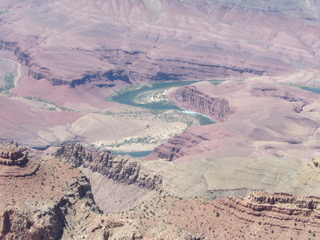
The Colorado River is shrinking, leaving the western United States the driest it has ever been. News channels are telling residents of the west to cut back on watering lawns, washing cars, showering and filling pools and fountains.
Water is an essential part of human life—whether it be commercial or residential. Yet neither of those are the cause for the West’s drought crisis. Residential usage of water accounts for only 6% of water consumption and commercial uses only 8%.
This has raised the question, “Where is the other 86% of water going?” It is not going to a neighbor’s house or a specific individual. The root of the problem lies in the agriculture industry.
Farming and crop production may seem like a cause that justifies large volume of water use. However,the plant that’s getting a majority of the water is a plant we don’t even eat, alfalfa—a grain that is used to feed cows.
The reason this drought has been localized to the West is because alfalfa is primarily grown in Utah, Colorado and Arizona. Alfalfa is one of the most water intensive plants, requiring about 1.5 million gallons of water per acre.
In the West, farmers can harvest alfalfa up to 12 times a year, while selling it to the United States, China, Japan and Saudi Arabia. The value of the crop that was produced and shipped to these countries was $880 million in the last year.
President of Icarus Ecological Services, a Southeastern Field Ecologist and Wetland Biologist, Thomas Estes, expressed his concerns about how inefficiently the water crisis is being handled. “The original water budgets drawn up for the Colorado river in the 70s profoundly overestimated the amount of water going into the Colorado. So the beginning data was bad. Then, trying to foster agriculture in the Southwest was not a brilliant idea either, but using ditches to carry the water was definitely not an efficient idea. Should have been tile, pipe delivery or like the ancient Qanats in the Middle East. Evaporation loss on the ditches is huge,” he voiced.
Currently, there is no plan on how to cut water usage to stop this 23 year drought. Although there are ideas on how to reduce the drought, it’s now up to state legislation to decide on an action plan. As of now there is no plan set in place other than the federal government continuing to tell these states to reduce their water usage.
Arizona, for the second year in a row, has had to cut their water usage down, taking away 21% of the state’s. This is also happening for Nevada — 8%.
Governments have suggested paying farmers to not water a part of their crops in order to save some water. This reserved water would go to reservoirs, residential or commercial purposes.
Though Kyle West, an avid outdoor enthusiast, environmentally conscious individual and a current Colorado resident has an idea on what farmers should start doing to reduce water usage, “Industrial agriculture requires the crops needed for livestock feeding, but regenerative farming does not, as the livestock graze on what is naturally available therefore, reducing the water resource to grow the crops to feed them,” he said.
These are only a couple ways to reduce water usage. However, it is easier said than done. At the end of the day it is the state’s decision to make— a decision that must be made urgently.








